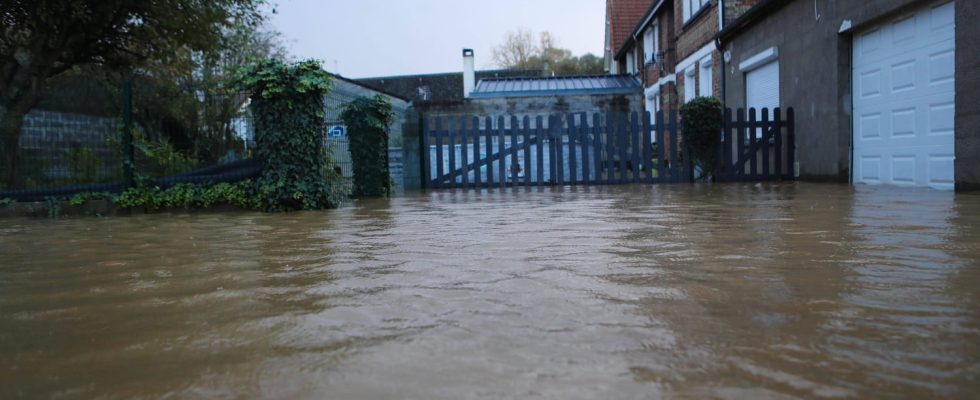Pas-de-Calais is once again placed on red alert for the risk of flooding this Wednesday, January 3.
Météo France has placed the Hauts-de-France department on red alert for the risk of flooding this Tuesday, January 2 at the end of the afternoon. The Aa river which crosses the town of Saint-Omer is particularly at the heart of concerns. Vigicrues pointed to “exceptional levels” of flooding. Around fifty people have already been evacuated in the region as announced by the prefect of Pas-de-Calais, Jacques Billant, during a press briefing this Tuesday.
A month and a half after a previous episode of historic floods in Pas-de-Calais, “very substantial means, pumping in particular” will be put in place, as specified by Julien Marion, the general director of civil security. at the Ministry of the Interior. On
If Pas-de-Calais is on maximum alert, other departments have been placed on orange alert for the risk of flooding by Météo France. These are Finistère, Nord, Aisne, Ardennes, Meuse, Meurthe-et-Moselle and Moselle. Aisne joined the list of departments on orange alert this Wednesday morning.
In its bulletin, Météo France specifies that a “regime of showers set in place over a large northern half of the country, more particularly marked in Pas de Calais.” According to the weather agency, showers overnight from Tuesday to Wednesday brought an additional 7 to 15 mm of rain. Météo France predicts heavier and more frequent rains during the day with “cumulative amounts of around 20 to 40 mm in 24 hours”. The agency is also forecasting thundery showers this Wednesday afternoon.
For its part, Vigicrues has placed the Aa river on red alert from Tuesday and is forecasting an “exceptional flood”. The return of floods in Pas-de-Calais and in particular the river cited above can be explained according to Vigicrues by “significant precipitation observed at the start of the week as well as the saturation of the soil”. To which is added the fragility of the banks and dikes downstream. Vigicrues warns in particular of the risks of overflows “downstream of the section”. Adam Beernaert, Director General of Civil Protection of Pas-de-Calais, explained to Release that with heavy rains “the water tables are full, the soils are waterlogged, the tides push the water towards the interior of the coasts… We add water to water”.
